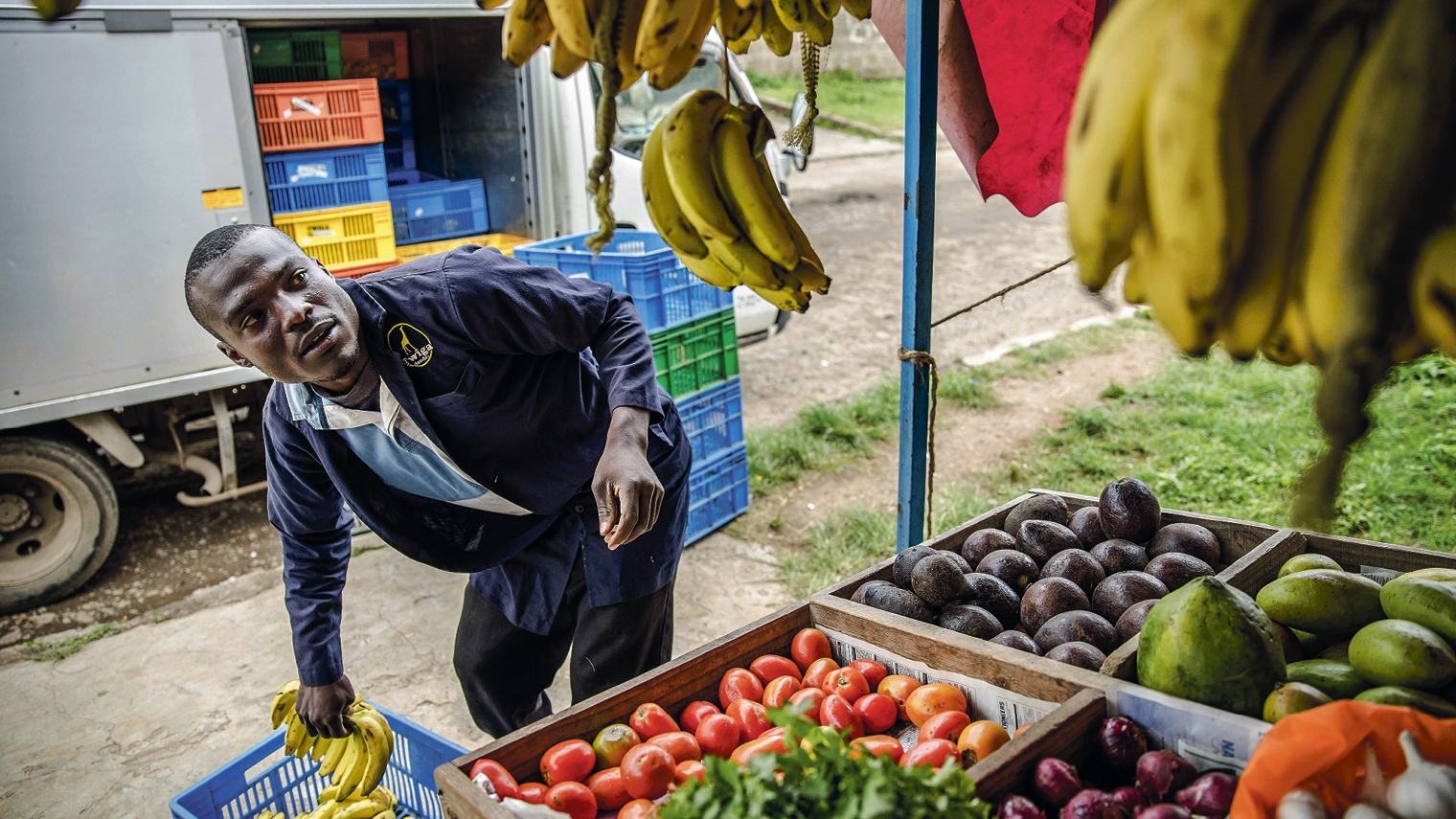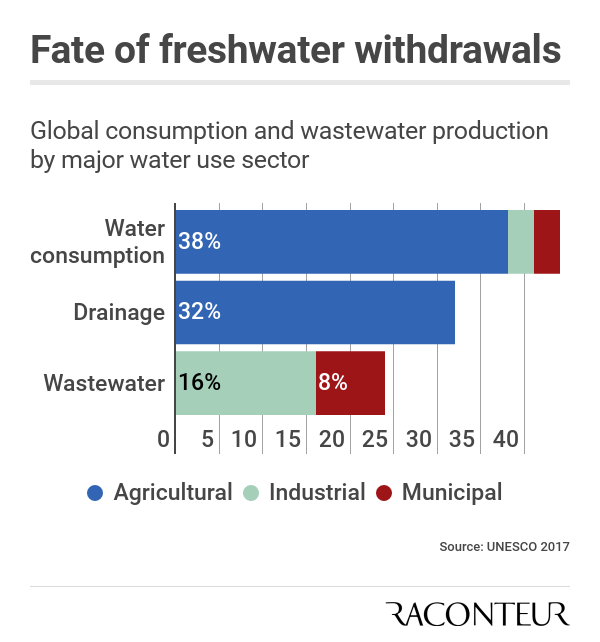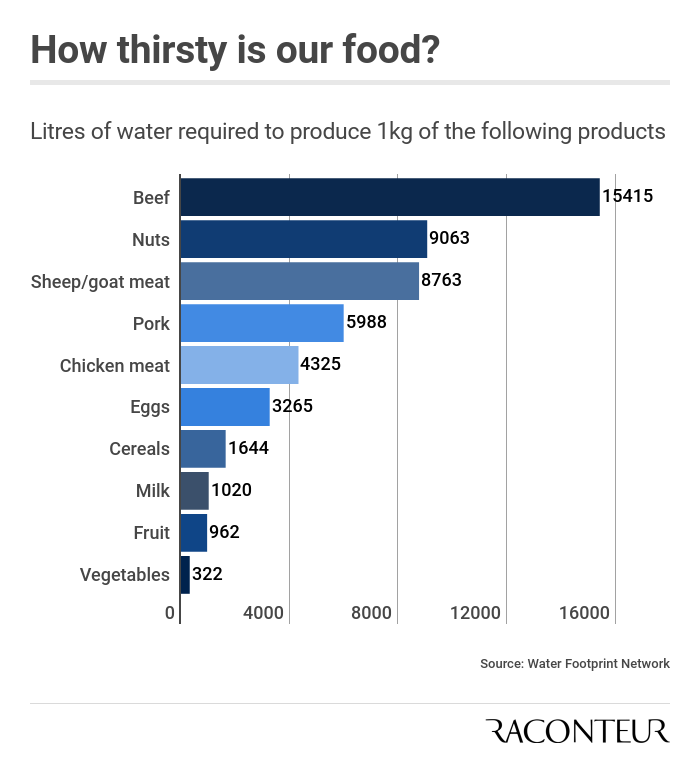Last year, 124 million people around the world faced food crises that required humanitarian action. The figures from the United Nations Food Programme show that more than 39 million people starved as a result of droughts.
With so many people affected, it would be easy to assume that there is not enough food to feed the world’s growing population, but this simply isn’t true. While there is sufficient food to go around, many developed countries lack the farming and supply chain techniques to ensure that each harvest gets to the people who need it, before it spoils.
“Under nourishment doesn’t happen from producing insufficient quantities of food,” explains Guillaume Bonnel, head of impact investing at Lombard Odier Investment Managers. “It happens because of logistical problems.”
All the while, the potential for food shortages continues to grow, due to the increasing global population. The UN estimates that the world’s population will rise from the current level of 7.6 billion to almost ten billion by 2050.
Grassroots pressures are the first step in getting the global investor community behind this
Huge amount of food needlessly wasted every year
According to the UN’s Food and Agricultural Organisation, around one third of the food produced in the world gets lost or wasted each year. This breaks down as 30 per cent of cereals, 40 to 50 per cent of root crops, fruits and vegetables, 20 per cent of oil seeds, meat and dairy, and around 35 per cent of fish.
“In developing countries, 40 per cent of losses occur post-harvest,” says Stephane Soussan, a fund manager at CPR Asset Management.
In the poorest countries, harvesting techniques are often not as sophisticated as those in developed countries, Mr Soussan says. This means that food spoils during the early stages of the supply chain or because storage and cooling facilities are not as efficient as the they could be.
Resolving these recurring shortages will require a combination of investment, technological innovation and education, according to the investment community.
Smart investment could help restructure the supply chain
Fund management groups believe they can make a solid investment return for investors while simultaneously helping developing communities that are the victims of poor food supply chains.
For Swiss fund manager Lombard Odier, one such investment has been in Kenyan company Twiga Foods. Kenya’s poor road infrastructure meant that farmers saw high levels of spoiled fruit and vegetables when they transported their produce to market.
Having received investment, Twiga launched a smartphone app that enables buyers to order the food they need in advance of market day. Twiga set up a series of warehouses in strategic locations to keep the produce fresh and deliver it right at the time it is required.

Twiga Foods employee delivering bananas to a stall in Nairobi, Kenya; Twiga vendors are able to order exactly the food they need in advance of market day via a smartphone app to cut down on waste post-harvest
The world’s fund managers are also keenly aware of a shift in the way that people look at investing. Numerous industry surveys have found millennials are increasingly keen to see their investments play a part in improving society, particularly in areas of poverty or food scarcity. This could yet lead to further investments in improving food supply chains in developing countries.
Mr Soussan recognises that such investor pressure is not yet at the levels witnessed for other sustainability investment priorities, such as climate change, but he believes there is potential for investor appetites to have a material impact.
“Investors, in allocating capital, can play an important role in true restructuring of the food chain,” he says. “Grassroots pressures are the first step in getting the global investor community behind this. Any global restructuring will be dependent on how powerful these forces can become.”
Precision agriculture could transform how we farm
While resolving supply chain issues are a part of the problem, farming techniques will also need to be improved if they are to meet demand or serve impoverished communities, according to experts.
Precision agriculture – the use of technology to improve farm and production practices – will have a transformational effect in developing nations that currently witness the highest levels of food losses post-harvest.
“Most of the increase in agricultural production over the coming decades will come from yield improvement as increasing arable land is difficult,” says Mr Soussan. “Precision agriculture will probably play a role in boosting productivity while preserving some resources by optimising or reducing the use of inputs like seeds, fertilisers and crop-protection products.”
New technology set to improve every step of food production
Encouragingly, the use of precision agriculture goes way beyond pure crop production and management. Advancements in technology could also enable livestock farmers to improve their results.
Dr Stefan Weiskopf, chief executive of farming intelligence group Antelliq, says he expects adoption of precision agricultural techniques to be rapid in the years ahead.
He explains: “There are several attractive secular growth drivers for animal protein production with precision agriculture: increasing demand for protein and smart farming adoption, constraints on production driving the need to produce more with less, food safety and supply chain efficiencies, and animal welfare.
“Unquestionably, these trends require the use of and investment in smart farming solutions, which can accurately monitor and calculate how much water or feed is necessary to operate farms in a cost-effective and environmentally sustainable way.”
The latest international statistics on malnutrition make for uncomfortable reading, but evidence shows that the solutions exist through supply chain management and precision agriculture techniques.
For these solutions to be successful, there will need to be buy-in at global level form both government and investor stakeholders. Ultimately, it is these two groups that have the greatest opportunity to banish malnutrition for good.
Huge amount of food needlessly wasted every year

Smart investment could help restructure the supply chain


